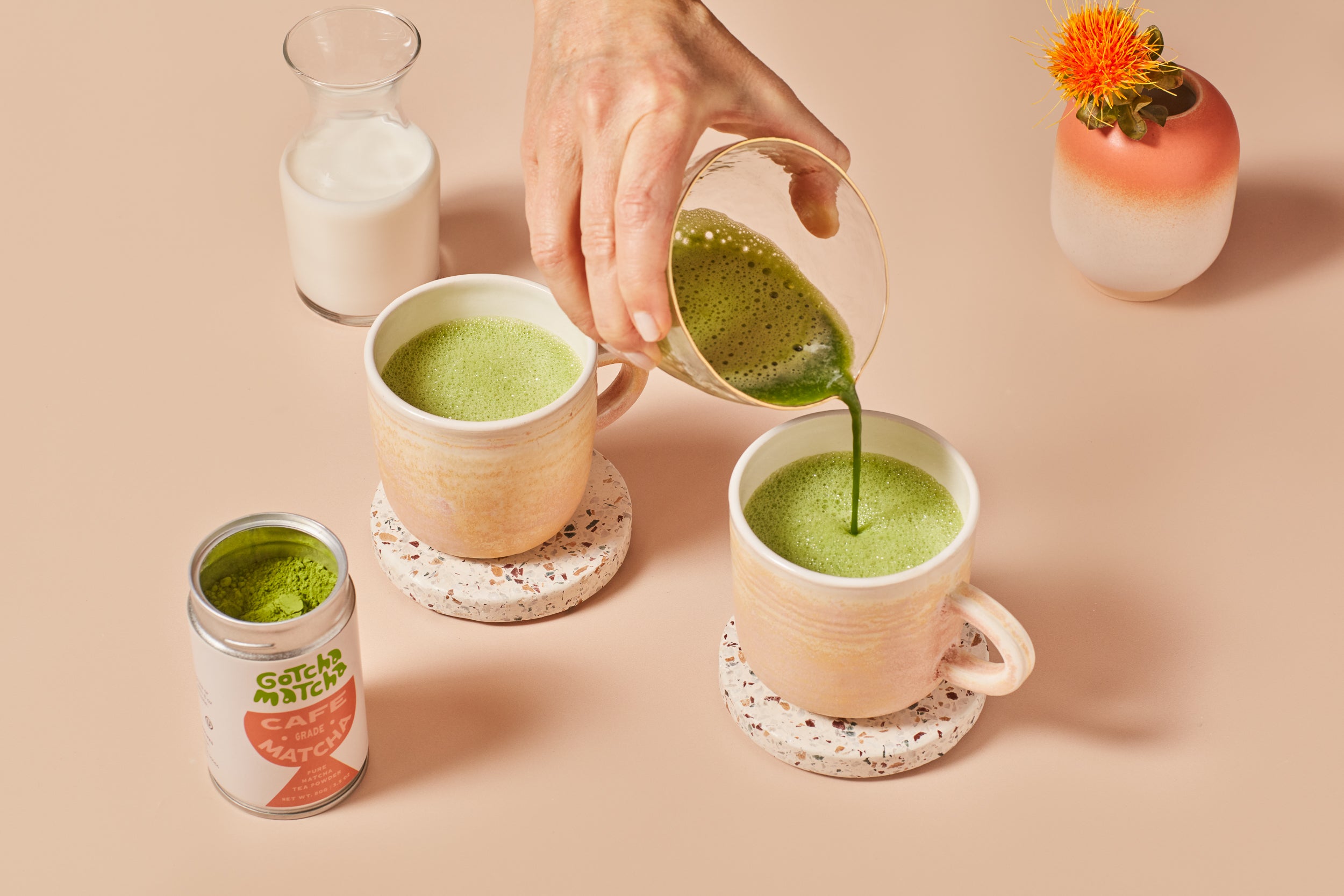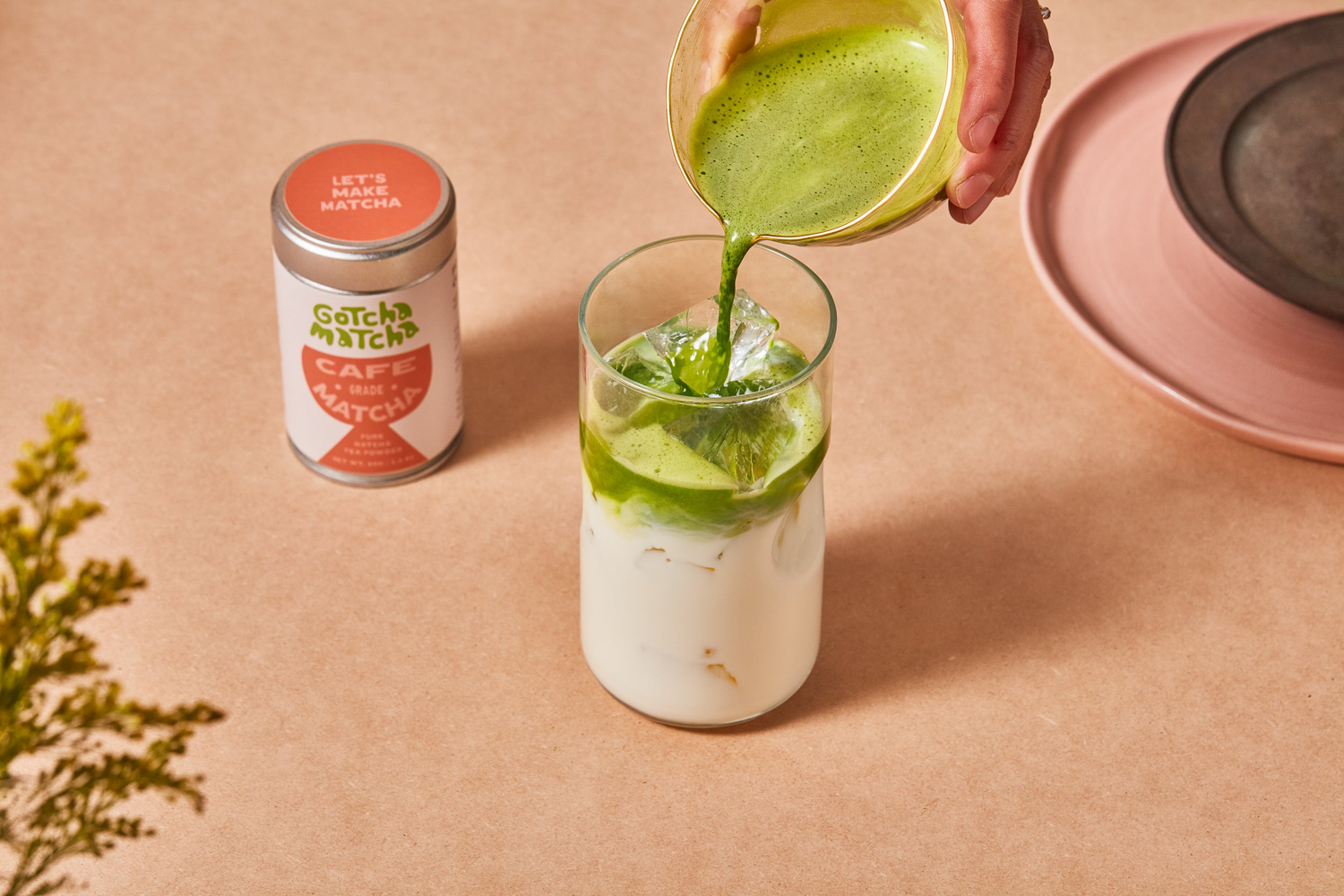Our Customers Often Ask
Collapsible content
Which grade of matcha is right for me?
Choose a tea based on the flavor profile that suits your palate. Ceremony Grade matcha is made from the youngest leaves, which are completely de-stemmed. The taste is rich, creamy and vegetal with no astringency. Cafe grade, is made from more mature leaves with a bit of stem and vein in the blend. This tea is great for lattes and recipes, as well as tea with water. All of our matcha is shade covered, rich in chlorophyll, amino acids and catechins.
How much matcha should I use? How much can I have per day?
A single serving can range from 1-2teaspoons of powder. We recommend starting with less. See how you feel. Over time you can experiment with the ratio of tea to water (or liquid) that best suits you. Matcha is rich in fiber, so if your system has been sluggish, you may experience some renewed digestive vitality. That’s a good thing!
What does matcha taste like?
Matcha tea is made from shade-covered leaves. This process increases the chlorophyll content of the leaf and produces a full bodied, creamy vegetal taste, occasionally with an astringent note, depending on the grade of tea. Other factors like temperature of water and ratio of powder to other ingredients will influence the flavor profile of your finished beverage.
How is matcha prepared?
Matcha tea is incredibly versatile and can be prepared as a tea with water, or used as an ingredient in lattes and smoothies. Traditionally matcha is whisked into a frothy beverage in a ceramic tea bowl, using a bamboo whisk. You can also sprinkle matcha powder over oatmeal, yogurt, fruit and blend with salt to add a unique greet tea accent to savory foods like tuna salad or eggs. However you like to prepare matcha, is the best way to drink it. Find inspiration and guidacne on our Matcha Recipes Page.
What is the best way to store Matcha?
Keep your matcha well sealed in the fridge. Think of it as a fresh vegetable.
How long will matcha tea last?
Matcha, when well stored, will retain its color, flavor and aroma for weeks and even months. We often call it a “near future” tea as you want to consume it as soon as possible for best flavor and taste. If you want fresh Matcha regularly delivered to your door, check out our subscription plans. You can cancel or pause at any time, and you will always get free shipping.
Does matcha tea have caffeine?
Yes. Matcha has about 30 mg caffeine/teaspoon of powder. Coffee has about 150 mg/8 ounces depending on how it is brewed. But matcha also contains l-theanine, an amino acid which improves cognitive function and induces a calm soothing effect on the mind.
Part of the lure of the tea, is that Buddhists monks used it as an aid in meditation as the stimulation from the caffeine kept them alert, while the amino acids kept them calm and focused. Matcha is an excellent coffee alternative in the morning and an energy booster in the afternoon between lunch and dinner.
When drinking matcha, whole tea leaves are consumed (not just the steep as with other teas), providing 4 to 6 hours of mild steady energy. Matcha is both a stimulant and a relaxant, perfect for focusing on work, meditation, exercise or play. Find out about Matcha’s other benefits on our health benefits of matcha tea page.
Does milk interfere with matcha’s nutrients?
Some studies show that drinking matcha with dairy milk can block the absorption of nutrients in the body. Try nut milks instead. Read our Almond Milk Matcha Latte Recipe here.
How much EGCg is in a single serving?
One gram of matcha contains 105 mg of total catechin content, and roughly 61% is EGCg. A single serving size is typically anywhere from 2-4 grams or 1-2tsp, depending on your preference. Matcha tea contains 4 times the catechins of regular brewed green tea.
I don’t have a whisk. Can I still drink matcha as a hot tea?
Absolutely. Simply add 1T hot water to the poweder in the bottom of your cup. Make a smooth paste, then fill your cup with more fresh hot water. However, we do recommend trying the whisk. It is uniquely suited for creating a frothy bowl of matcha tea which has an airy pleasant texture and tastes wonderfully delicious.
Are there other ways to enjoy matcha besides as a tea/drink?
Matcha Source teas are delightfully flexible. We encourage people, especially New-Comers, to explore all of the ways matcha tea can fit into your life. Most of our customers drink some version of a blending drink such as almond milk green tea lattes or morning smoothies. Matcha is delightful sprinkled over yogurt or berries. Or add to salt for a savory taste to eggs and fish. Visit the recipes page for more sweet and savory ideas.
Matcha Green Tea vs. Fruit and Berry Juice
While fruit juices can be high in antioxidants, they tend to contain a lot of sugar and calories, and virtually no fiber. So enjoy them in moderation – or better yet, opt for the whole fruit, which provides antioxidants and fiber with fewer calories. Try combining Matcha in your smoothies for a delicious and nutritious combination. Read more on our Matcha recipes page.
Why is matcha tea relatively expensive when compared to other green teas?
Matcha production is limited. Covering the fields with bamboo mats, or tarps, weakens the tea plants, and a longer recovery period is needed before they can be harvested again. Most farmers pick matcha leaves entirely by hand – although machine picking is not un-common. Local farmers closely supervise the growing, harvesting and sorting of matcha leaves. At the factory, production requires several processes including steaming, drying, destemming, sorting, grinding and packaging. Each stone grinder produces only about 40 grams of matcha in an hour.
Matcha has always been specially crafted tea in Japan, expensive and made in limited amounts since its introduction to Japan from China in the 1200’s.
The pricing of matcha in Japan is directly related to which leaves are used, where they were grown and which farmers cultivated it. When you look to buy matcha, you’ll find the most expensive ones are the greenest color and the softest in texture. This denotes that only the youngest leaves were used and de-spined (all coarse fibers, i.e. the stems, removed). Matcha is made in relatively limited quantities, and because it is so popular in Japan, relatively little remains for export.
Can I drink matcha while I’m pregnant or nursing?
Different moms have different answers on this. Please ask your doctor.
Will matcha interfere with my medication?
Probably not, but please ask your doctor.
How do I start my matcha journey?
Start with The Gotcha Matcha WhiskIt Bundle with Gotcha Matcha, a bamboo whisk, celadon whisk holder and bamboo tea scoop. All the essentails you need for to enjoy and prepare matcha tea with confidence at home, work or play.
LEt's Make matcha


WhiskIt Kit Bundle

Gotcha Matcha Teas
Premium quality matcha, hand-picked by the Yahagi River in Japan.